
How To Increase Alkaloid Levels In Mescaline Cacti
Growing mescaline cacti is fairly easy and offers a rewarding spiritual experience. But is it possible to increase the levels of mescaline in San Pedro or peyote? If so, how? Find out everything you need to know about optimising alkaloid content in mescaline cacti.
There are many different plants and fungi (and even some amphibians) that contain compounds that can make human beings high. Among these, many have been used in traditional religious and spiritual practice throughout the world, including certain types of cacti. In Central and South America, and the Southwest of the US, there naturally grow several species of cacti that contain the alkaloid mescaline—a hallucinogenic compound long used in shamanic practice.
Mescaline-bearing cacti are fairly easy to cultivate at home, and as a grower, you may wonder how to optimise their potency for the best results. Though many of the following alkaloid-boosting techniques are based on anecdotal evidence, there's significant corroboration among growers regarding their efficacy. Read on to find out how to increase the strength of mescaline cacti.
What are alkaloids and why do they matter?
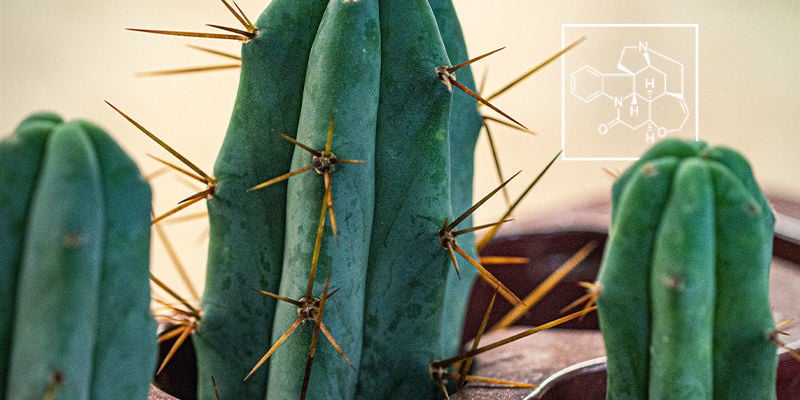
In order to understand how to boost the mescaline content of your cactus, you must first understand alkaloids. Alkaloids are a very broad category of compounds, some of which can interact with the body in meaningful ways. Some alkaloids act as drugs, evoking profound effects. In fact, the first-ever alkaloid to be isolated and identified was morphine, a well-known and highly potent opiate.
Another potent alkaloid is mescaline, famously found in the peyote cactus and San Pedro cactus, among others. These cacti have been consumed as part of Central American shamanic tradition for millennia due to their powerful psychedelic effects.
The importance of external stressors
The exact role of mescaline and other alkaloids in peyote, San Pedro, Bolivian torch, and other cacti is not entirely known. However, it’s generally suspected that alkaloids are the cactus’ means of defending itself against predators. Though we may eat them deliberately to get high, many animals looking for a meal may be put off if they have to go through a profound spiritual experience every time they want to eat.
Therefore, it’s generally agreed that external stressors stimulate alkaloid production within mescaline-producing cacti.
How to increase alkaloids in mescaline cacti
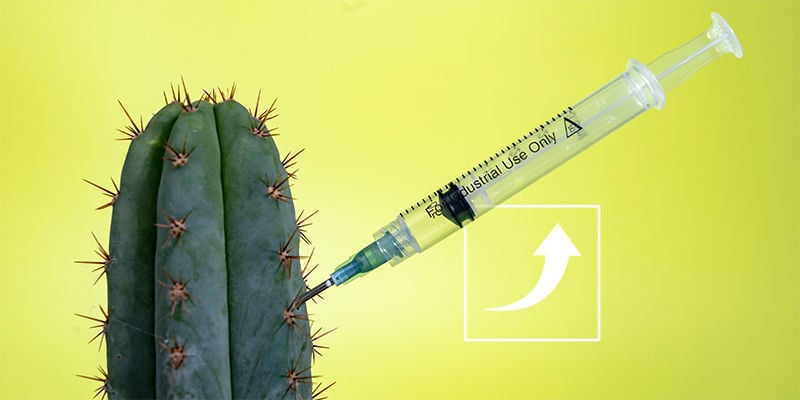
So, if you’re looking to boost the alkaloid content of your mescaline-bearing cactus, what is the best course of action?
A little disclaimer: none of the following methods have been rigorously tested or proven. Most rely on anecdotal evidence, some of which is very modern, and some of which harks back to ancient traditions. Ultimately, most of the methods are based on the assumption that alkaloid development is an environmental stress response.
Mechanical stress (mutilation)
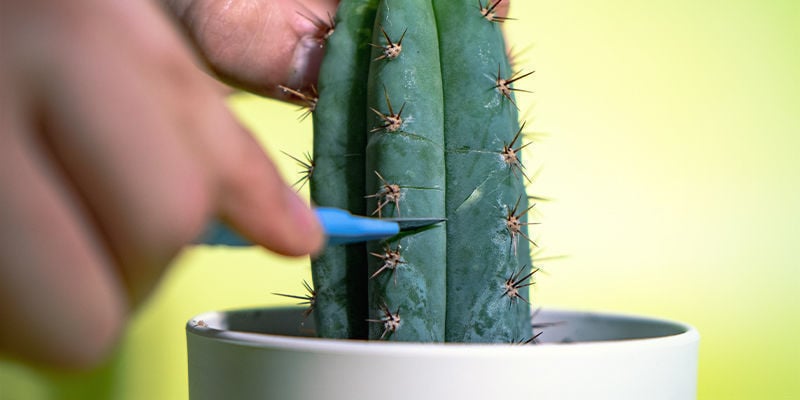
This one goes by a brutal name, and some will indeed see this method as particularly violent. Scarring, mutilating, and damaging your cactus will simulate environmental damage, specifically predation. Given the leading theory that mescaline is produced to deter predators, it stands to reason that convincing your cactus it is falling foul to predation could cause it to boost mescaline production as a means to defend itself.
If taking this route, it’s important to exercise restraint. Most importantly, whatever implements you use to damage your cacti, ensure they are sterile. A little superficial damage may stimulate alkaloid production, but a dirty wound will more than likely lead to a fatal infection. Likewise, don’t seek to damage the plant too much by cutting off big/major parts of it.
If this seems too brutal to you, there are other methods available.
Nutrient levels
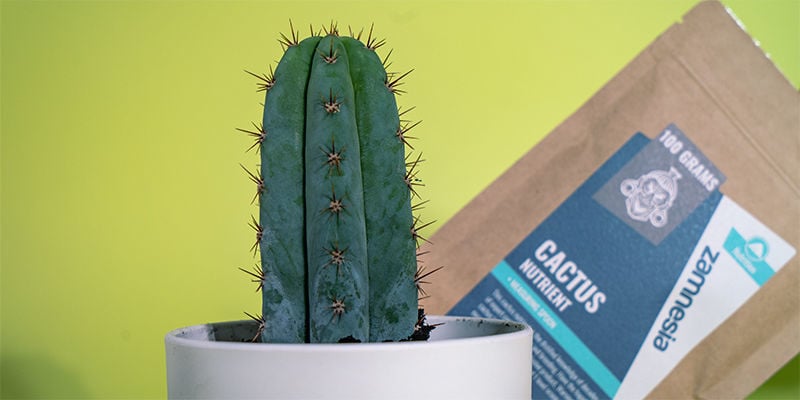
Cacti need nutrients in order to produce various alkaloids, so ensuring a good feeding routine will give them what they need to fuel mescaline production. In fact, overfeeding (a damaging mistake many growers fall prey to) may actually be beneficial in the quest for greater concentrations of mescaline.
Nitrogen, specifically, may help to draw water from a mescaline cactus when administered in abundance. This essentially acts as a roundabout way of depriving your plants of water, which in turn stresses them. Again, though, it’s crucial to achieve a balance with this method. Stress might increase alkaloid production, but it can also irreversibly damage or kill your plants. In the case of overfeeding, you could cause nutrient burn and ultimately halt its ability to absorb any food. So if opting for this method, only overfeed slightly!
Full shade
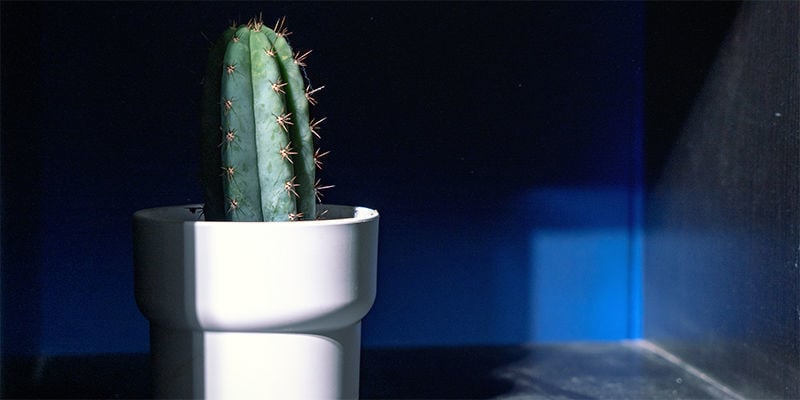
Leaving plants in full shade, for anything from a few weeks to a whole growing season (spring and summer) before consumption is a very old method used by the shamans of Central America. These days, cacti can be left in the shade while they are still growing, but in traditional practice, where cacti were harvested wild, the cuttings were often left in the shade for some time before consumption.
Essentially, this method interrupts a cactus’ ability to photosynthesise fully, thus causing stress.
Water deprivation
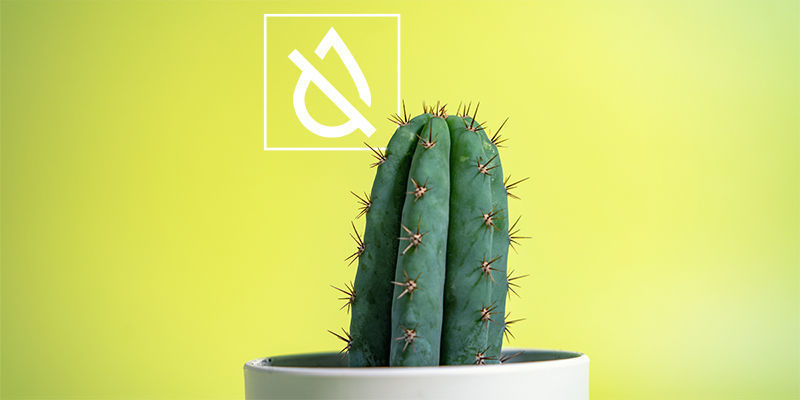
Depriving your mescaline cacti of water is another way to stress them. Like with light deprivation, some growers stop watering their cacti a whole season before they intend to consume them, increasing stress throughout their final period of growth. This method simulates a period of drought, which may boost mescaline level in turn.
Cactus age and size
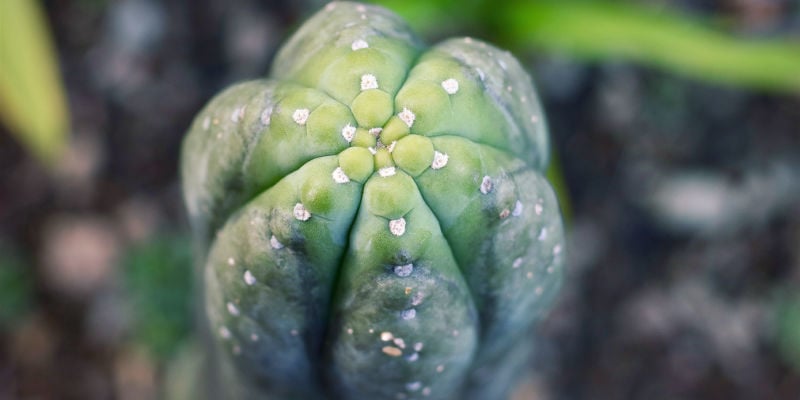
The last two methods, full shade and water deprivation, can only be performed when your cacti are mature and nearing the perfect time for consumption. Obviously, if you give them zero light or water from day one, they won’t grow at all, and will eventually die.
So, you must first grow your cacti to a desired size, and then trigger stress responses in their final growing season to boost alkaloid levels as much as possible before you cut them and eat them.
Note: although older cacti are generally stronger than younger ones, size also matters. Gram for gram, smaller cacti contain more mescaline compared to larger ones. So trying to force a cactus to grow as large as possible may not be the most effective way to increase the concentration of mescaline. However, a larger cactus may still have a larger overall amount of mescaline compared to a smaller one.
Chemical doping
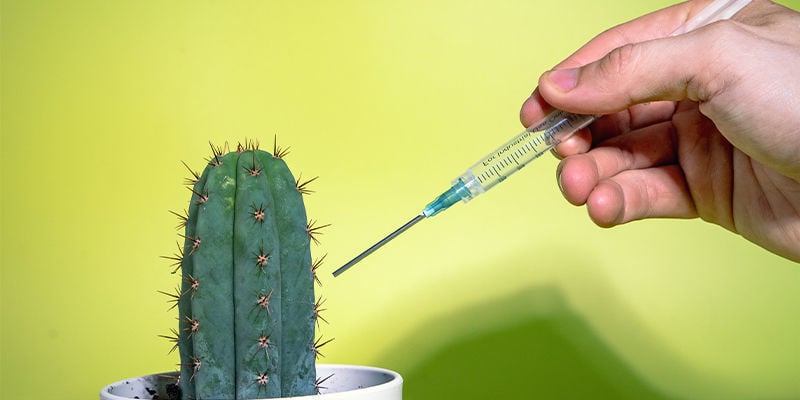
A more modern method supposes that you can inject the precursor compounds necessary for mescaline production straight into the cactus, thus causing it to turn these chemicals into the much sought-after alkaloid.
We’ll explain how below.
Note: this method requires substances that may be controlled and difficult to get hold of, so it might not be the best option for many people.
How to chemically dope a mescaline cactus
If you’ve got access to all the necessary equipment, doping your cactus is pretty simple. Basically, this process works by giving the cactus the precursor chemicals necessary to synthesise mescaline. Here’s how.
Equipment
- Syringe
- Hydrochloric acid
- Doping compound: dopamine (ideal) or a mix of tyramine and dopa
Directions
-
Deprive the cactus of water for at least two weeks—this will increase its uptake of the injected solution.
-
Prepare a mixture of dopamine and hydrochloric acid (.05 N) solution. Otherwise, use tyramine and dopa in the place of dopamine, and the cactus will turn it into dopamine, and then mescaline.
-
Inject 5ml of the solution into the plant. Around 2.5ml should go right at the base, near the roots. The rest should be distributed throughout the plant’s green flesh. Be gentle, and leave the needle in place for a few seconds each time to aid absorption.
-
Now, leave for at least 4–8 weeks until consumption. As the plant will be busy metabolising these compounds, it’s probably best not to stress it during this time. Instead, treat it very well to encourage healthy, vigorous growth. You’ve added the compounds, so you don’t need to trigger it into making them itself.
- There’s no need to do this only once; it can be repeated indefinitely every 6–8 weeks as long as you want, for potentially greater results.
How to test alkaloid levels in a mescaline cactus
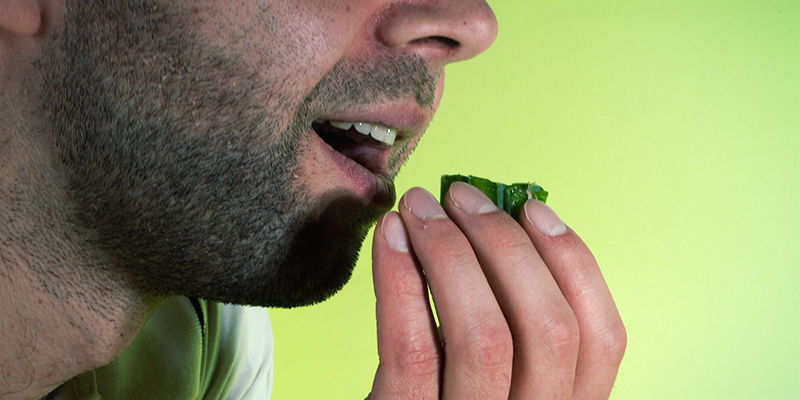
Unfortunately, accurately testing the alkaloid content of mescaline cacti is pretty difficult. There are various extraction techniques that can be used, but many of these are more involved or elaborate than most will find necessary.
With that in mind, you have two options.
The first is to take a little, gauge its effects, and go from there. The reality is that, for most homegrown drugs, this is how people tend to test the potency of their stash—be it cannabis, mushrooms, or mescaline cacti.
A second method is that which is used by some shamans in Central America. Some claim that the darker green the flesh of the cactus, the higher the concentration of mescaline. It’s unclear whether this is actually true, but anecdotal evidence seems to suggest it has at least some credence.
A counter-argument to stressing mescaline cacti
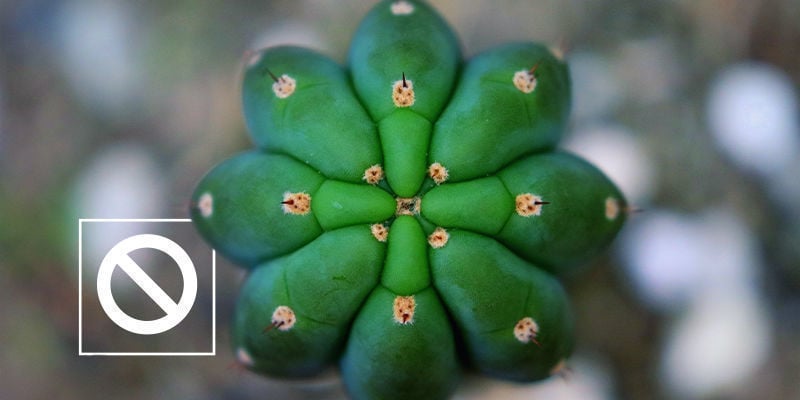
Now you know how to stress your cacti in hopes of increasing mescaline production! Unfortunately, we can’t be certain if these techniques are truly viable.
There’s also a different school of thought when it comes to this matter; that if we intend to consume something for spiritual purposes, treating it well is more likely to lead to a good experience.
There are two ways of looking at this. The first suggests that the plant and the drug experience it induces is sentient and can change depending on how it’s treated. The second is a little more symbolic; if you’ve tended to and properly cared for something, the act of consuming it is likely to yield better effects compared to something you’ve systematically stressed and mutilated to increase its potency.
-
 4 min
June 17, 2025
Top 5 cactus care mistakes and how to correct them
Cacti are hardy and low-maintenance, but they still have specific needs. Overwatering, poor soil, and lack of light are just a few common cactus care mistakes that can cause problems. Learn how to...
4 min
June 17, 2025
Top 5 cactus care mistakes and how to correct them
Cacti are hardy and low-maintenance, but they still have specific needs. Overwatering, poor soil, and lack of light are just a few common cactus care mistakes that can cause problems. Learn how to...
-
 3 min
September 28, 2021
Echinopsis Zamnesiana — Our Exclusive Mescaline Cactus
As Zamnesia's unique and exclusive mescaline cactus variety, Echinopsis zamnesiana is an all-natural force to be reckoned with. Boasting a distinctive appearance coupled with an easy-going and...
3 min
September 28, 2021
Echinopsis Zamnesiana — Our Exclusive Mescaline Cactus
As Zamnesia's unique and exclusive mescaline cactus variety, Echinopsis zamnesiana is an all-natural force to be reckoned with. Boasting a distinctive appearance coupled with an easy-going and...
-
 3 min
October 12, 2019
How To Cultivate Cacti From Cuttings
If you want to grow mescaline cacti, you can do so from seed; but the more common (and faster) way is to propagate them from cuttings. Although rooting mescaline cacti cuttings is not too...
3 min
October 12, 2019
How To Cultivate Cacti From Cuttings
If you want to grow mescaline cacti, you can do so from seed; but the more common (and faster) way is to propagate them from cuttings. Although rooting mescaline cacti cuttings is not too...
-
 3 min
June 2, 2017
Mescaline Cacti Differences
Mescaline is a psychoactive compound found in several species of cacti. Each species provides its own interpretation of the mescaline experience. How do the effects differ from species to species?...
3 min
June 2, 2017
Mescaline Cacti Differences
Mescaline is a psychoactive compound found in several species of cacti. Each species provides its own interpretation of the mescaline experience. How do the effects differ from species to species?...





 United States
United States










